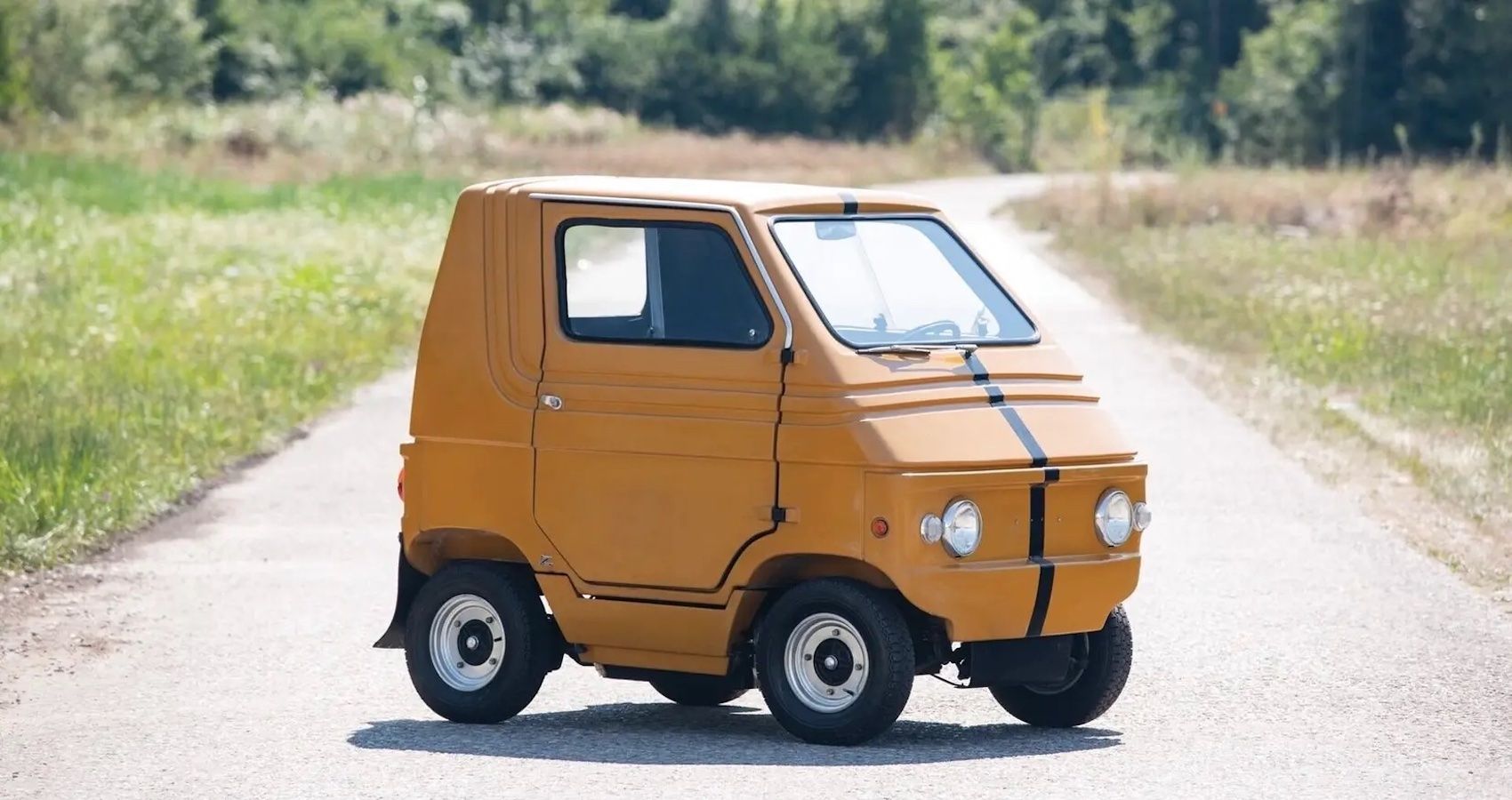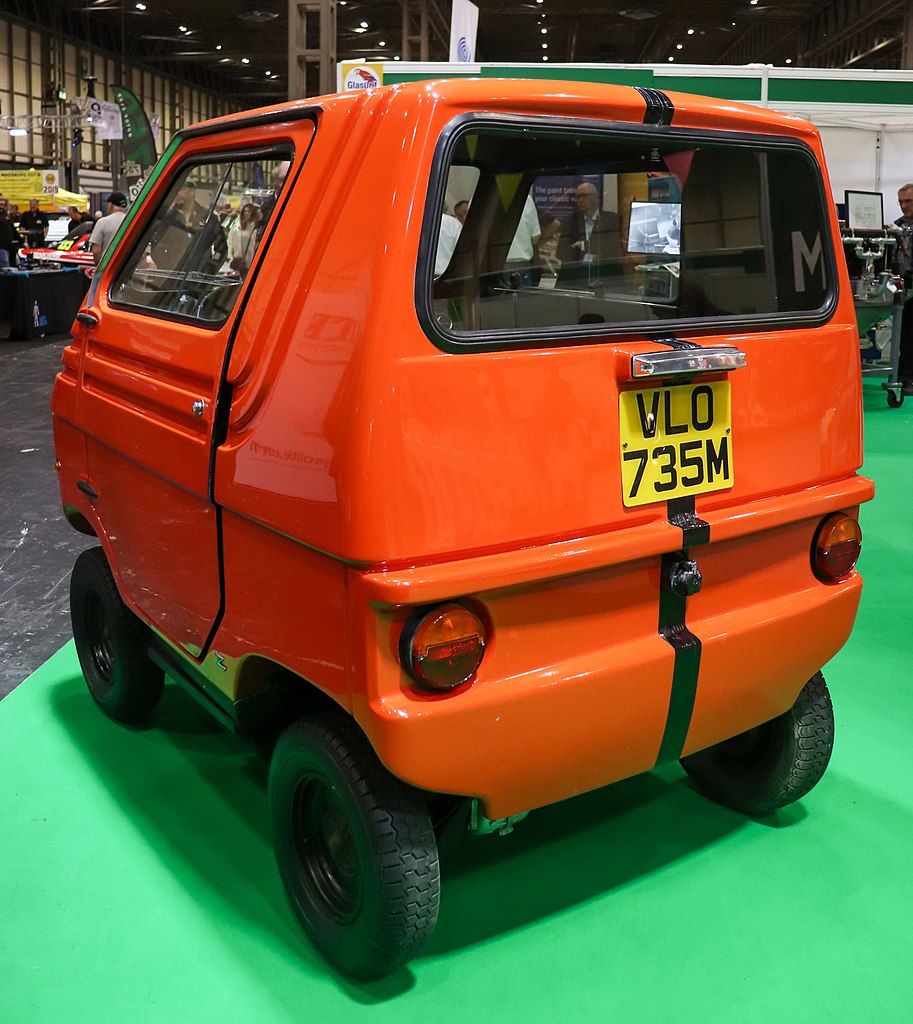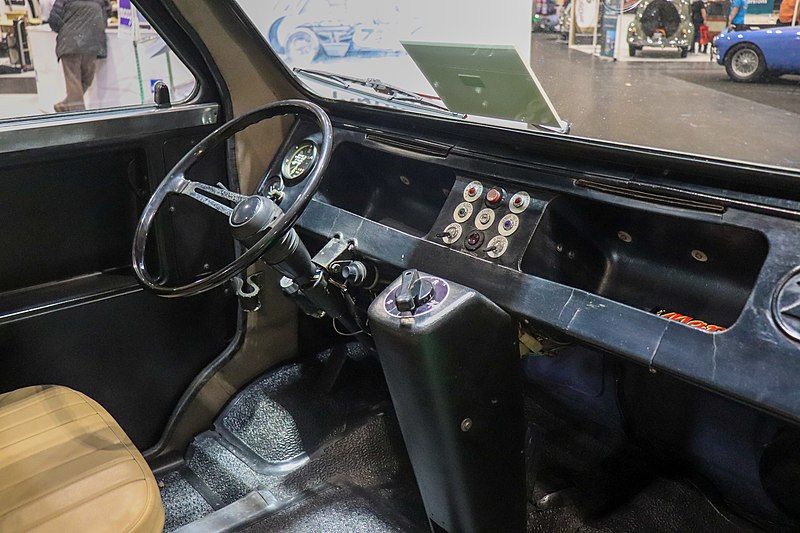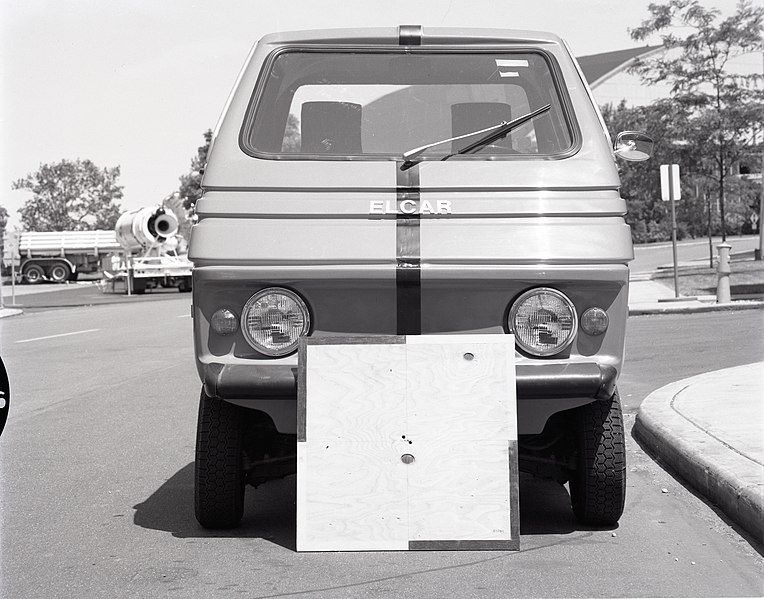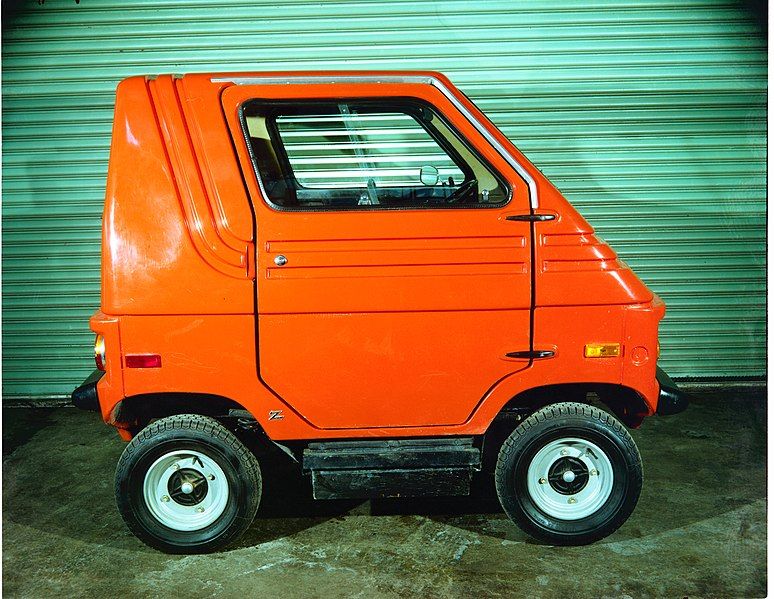The story of the Elcar is as radical as it looked. The car was the fruit of an automaker's desperate effort to keep its head above water. Known in the North American market as Elcar, Zagato Zele was a fiberglass body microcar manufactured by Italian coachbuilder Zagato. Prior to launching the Elcar, Zagato made a name in designing stylish GTs and sports cars.
However, the late 1960s and early '70s saw Zagato experience its share of corporate travails as almost every other automaker in history.
To survive the “famine,” Zagato had to think radically. His brand's market share had been threatened by the likes of Ford and Opel, which offered similar value at a less price. As the Elcar proved, Zagato chose to not just undercut his brand's rivals but veer off the GT segment altogether, at least momentarily. And so, right there at the Geneva Motor Show in 1972, the world witnessed a radically unique, small, and affordable electric microcar known as the Zagato Zele. Let’s check it out.
Features Of The Zagato Elcar
The Elcar came with easy-to-follow variants such as Zele 1000, 1500, and 2000. We mean “easy to follow” because the version designations were as simple to differentiate as the Elcar’s uncluttered design. It would get an extended 4-seat prototype (the Elcar Wagonette) designed by the Zele U.S. importer, Elcar Corporation.
All three versions were 2-door rear-engined rear-wheel drives produced from 1974 to 1976. Around 500 units were built during that time. The numbers 1000, 1500, and 2000 indicated the wattage of the Marelli direct-drive electric motors. The 1000 variant, for example, was powered by four 12-volt batteries with a 50-mile range on a full charge. Some versions got up to eight 12V batteries.
The battery is charged by a simple process of plugging into a power supply via a transformer. Elcar was unapologetically built for low-speed city driving. It was smaller than the all-new Nissan Sakura electric Kei car, with seating for two passengers and some cargo space. The 2000 variant came with a boost switch designed to starve the motor's magnetic fields at top speed, resulting in less torque but more speed. Elcar 2000 delivered a 25 to 30 mph top speed.
The Zele was not as famously attractive as the models Zagato was known for, such as the 1938 Lancia Aprilia Sport Zagato, the 1957 Fiat-Abarth 750 GT, the 1958 Lancia Flaminia Sport Zagato, the 1960 Aston Martin DB4 GT Zagato, the 1964 Alfa Romeo Giulia TZ-2, and many others. Zagato Carrozzieri-Italiani is probably the last man standing among family-owned, independently run Italian automobile design studios.
Zele may not have possessed the outrageously stylish aesthetics of the Zagato Aston Martins and Alfa Romeos but it arrived wearing attractive colors, including Orange-red, Brown, Dark blue, Pastel Blue, White, Green, and metal flake Blue. Assembled in Milan, Zele possessed an overall rugged look despite its square, boxy profile. We don’t know about the 1976 Italians, but the Elcar is rather a work of art by today’s imaginations.
The little electric car shared chassis and its independent front and rear suspension with the Fiat 500 and Fiat 124. It utilized a 4-position gear selector and a 2-position foot pedal providing six forward speeds and two reverse speeds. The electric motor offered a range of approximately 50 miles. The car was as lightweight as it was tiny. It measured 84 inches long, 53 inches wide, and 63 inches tall. It had a curb weight of 1,091 lbs, and the wheelbase measured 51 inches.
Not only that, but it wasn't very long ago (May 2022, precisely) that we were excited by the modernized Nissan Sakura electric Kei car. While Zagato Elcar is a classic EV you’d have to search faithfully for a long time before you can find one for sale, the Sakura is available today as a production model, although you can't buy one, either, unless you have a second home in Japan.
With a wheelbase of 98.2 inches and body dimensions measuring 133.7 inches long, 58.1 inches wide, and 65.2 inches tall, the Elcar is more compact than the Nissan Sakura, although the latter offers more interior and cargo space plus a better battery range. You could park two Elcars in one parking space. Regardless, the Zagato Elcar was way ahead of its time.
How Much Was The Zagato Elcar
Assuming you found a decent Zagato Elcar for sale, it could very much be your best and only chance of acquiring a Zagato-designed automobile. We have talked about how the car is small and lightweight. We should also mention that Elcar sported a Spartan interior with little more than the driver and passenger seats, the steering wheel, two pedals, and the 3-speed gear shifter.
The minimalistic approach helped keep the Zele as affordable as possible, making it possibly the cheapest Zagato-designed automobile as opposed to the Aston Martin DB4 GT Zagato, now worth more than $12 million. A yellow Zagato Zele 1000 closed at $14,029.25 in an RM Sotheby’s London auction in 2018. Another 1976 Zagato Zele 1000 was auctioned online on CollectingCars not long ago.
The auction closed with the rare classic boxy electric microcar remaining unsold when writing this article.
The light-blue Elcar is said to be "in good running order, having had its batteries and wiring replaced in 2020, and the odometer displays just 2,063 km." What are the odds that investing in a Zele would be investing in good fortunes, considering that the 1973 oil crisis hit just around the time the Zele was launched, which spiked public interest in the little microcar with no need for gas?

